The Scottish wildcat is the only native feline still found in the UK and are similar in size to a domestic tabby cat, but larger and more robust.
They are listed as Least Concern on the IUCN Red List, but in Britain wildcats are one of three mammals to be classed as Critically Endangered.
Historically, they were threatened by habitat loss and persecution but nowadays the main threat is hybridisation with domestic cats. It is even possible that there are no wildcats in Scotland that don’t have some domestic cat ancestry and so the numbers remaining might depend on how you define a wildcat.
Learn more about them with our expert guide by the Mammal Society:
What is a Scottish wildcat?
The Scottish wildcat is the last stronghold of European wildcat (Felis silvestris) in Britain.
This species is native to Europe and the Caucasus, and in Britain is confined to Scotland north of Glasgow and Edinburgh.
They are thought to live 10-12 years in the wild.
How large are Scottish wildcats?
Scottish wildcats are similar in size to a domestic tabby cat but larger and more robust. The average size of the head and body of a male wildcat is 59cm, the average female is 54cm.
Tail length can range from 26cm to 33cm. On average, adult males weigh over 5kg and females 4kg. At birth, kittens weigh 100-160g.
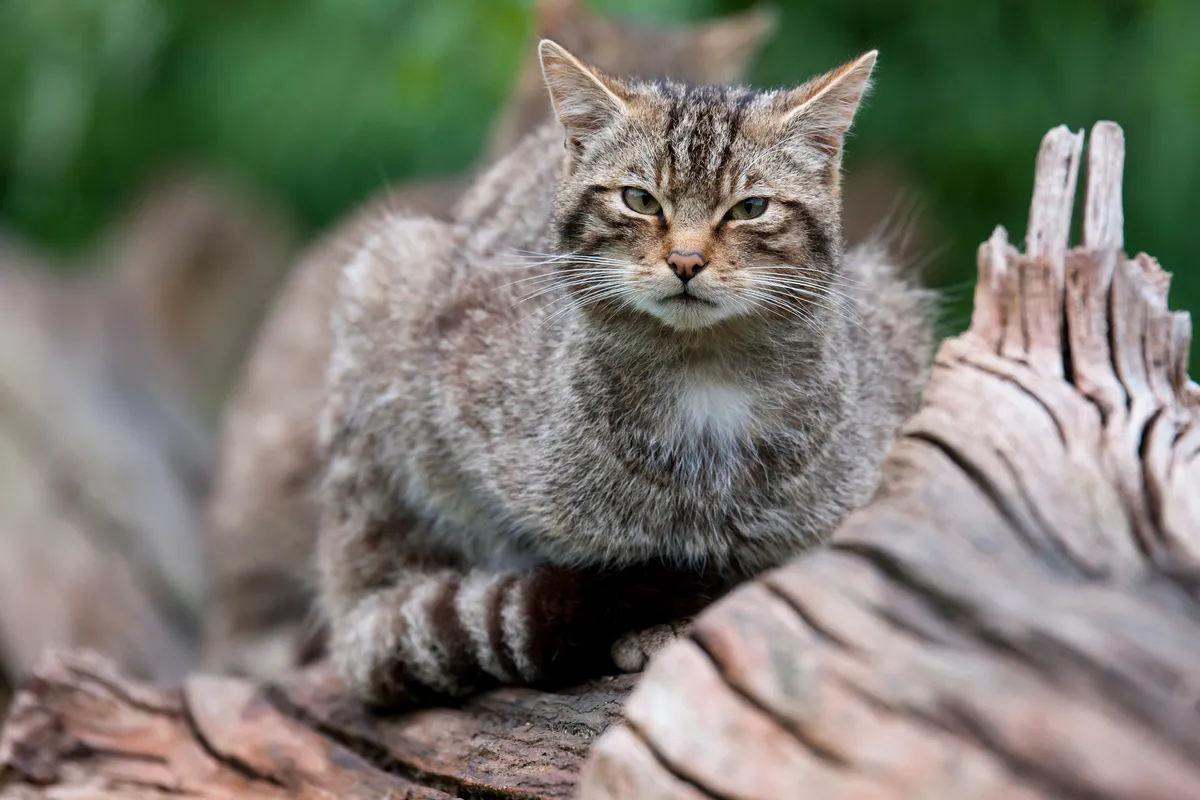
How to tell the difference between a Scottish wildcat and domestic cats
It is very difficult to distinguish a true wildcat from a wildcat-domestic cat hybrid and population genetics studies have indicated that there are high levels of genetic dilution meaning a lot of wildcats could be hybrids.
Wildcats are larger than domestic cats and have a bushy tail with a blunt black tip and thick stripes. Stripes on the body are also darker and thicker and with no white patches.
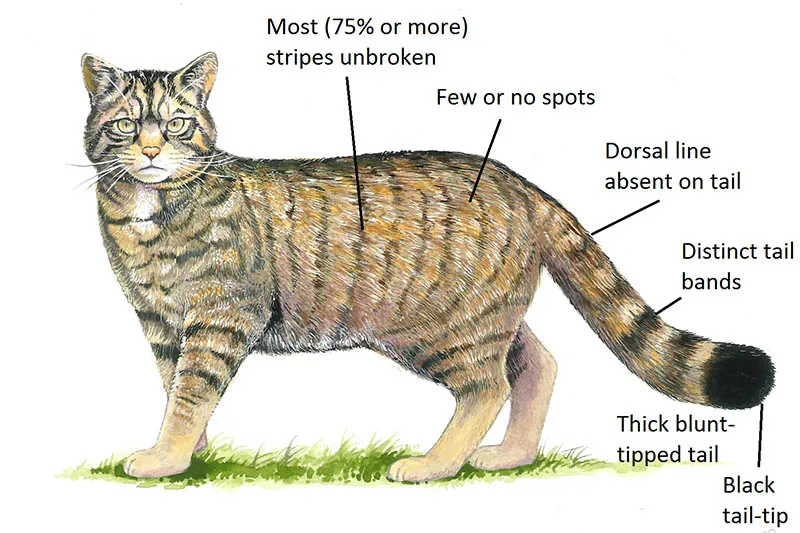
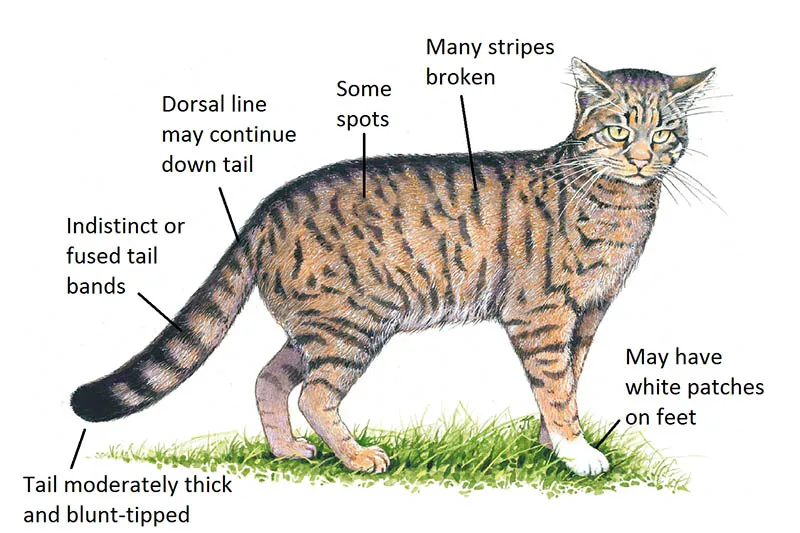
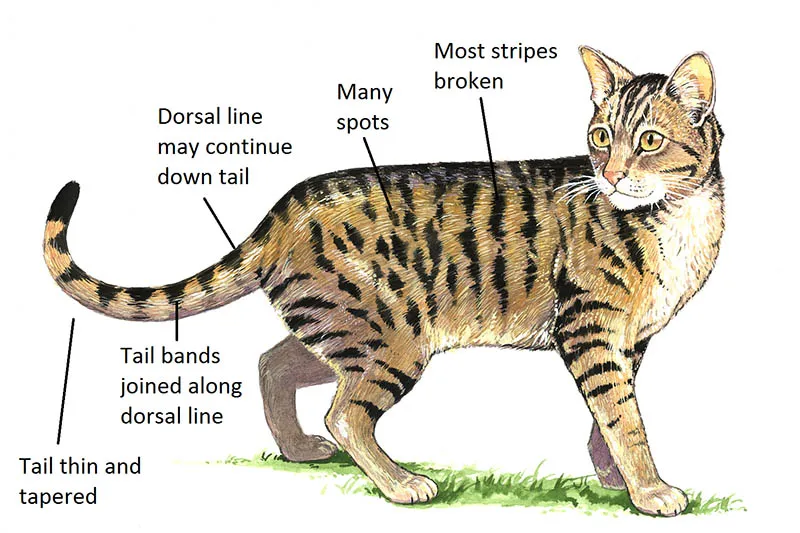
Where are Scottish wildcats found?
Scottish wildcats are found further north than those in mainland Europe. They use a mosaic of habitat types which often include broadleaved or mixed woodland.
Young coniferous plantations and open areas such as marginal farmland and grasslands are also used because they support high densities of mammal prey.
Why are Scottish wildcats critically endangered?
As part of the Mammal Society’s Population and Conservation Status of British Mammals (2018) the society produced the first red list of British mammals under the guidelines of the International Union for the Conservation of Nature (IUCN).
Despite their wider Least Concern status, in Britain wildcats were one of three mammals to be classed as Critically Endangered. The species used to be found throughout mainland Britain however, due to persecution and woodland clearance, they were lost from England, Wales and southern Scotland in the 19th century.
Today, their biggest threat is hybridisation with domestic cats, where a wildcat and a domestic cat produce young which are a hybrid of the two and therefore not pure wildcat.
Hybridising is thought to have started some point after the 1950s possibly because wildcat numbers were already declining from habitat change and persecution, before legal protection in 1988. Urban habitats also seem to be a barrier for wildcat dispersal.
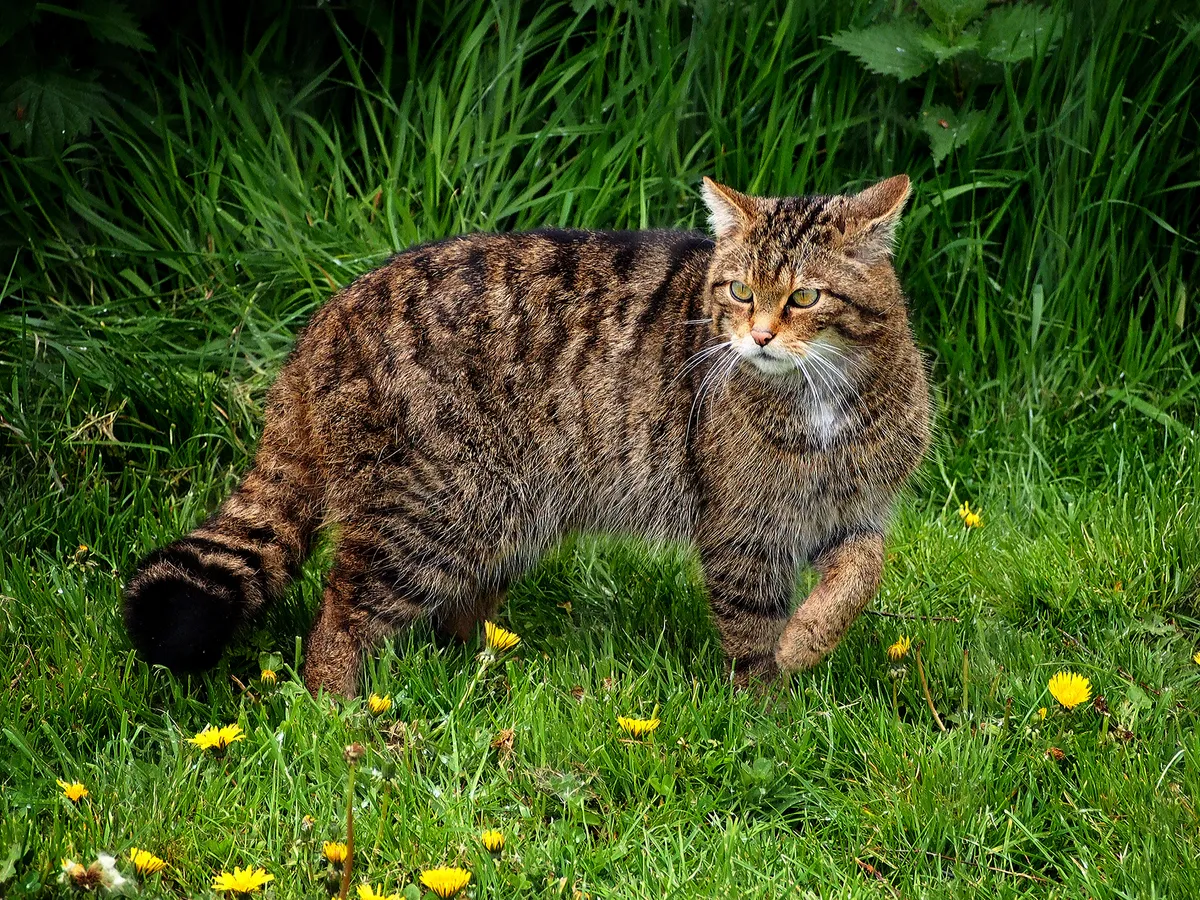
How many Scottish wildcats are there?
The Mammal Society’s Population and Conservation Status of British Mammals, commissioned by Natural England, Natural Resources Wales, and Scottish Natural Heritage, estimated a population of just 200 wildcats in Scotland. However, the range that the population could be between was given as 30 – 430 individuals.
Data on Scottish wildcats is poor and arriving at an exact figure is hampered by the widespread hybridisation. It is even possible that there are no wildcats in Scotland that don’t have some domestic cat ancestry and so the numbers remaining might depend on how you define a wildcat.

How many babies do Scottish wildcats have?
Scottish wildcats usually mate in February but the mating period can be a bit broader than this and so birth periods can also be broader. Litters of between two and six kittens are usually born in May but can be born later in the year. They will only produce one litter a year.
Kittens are weaned and stay with their mother until they are around five months old.
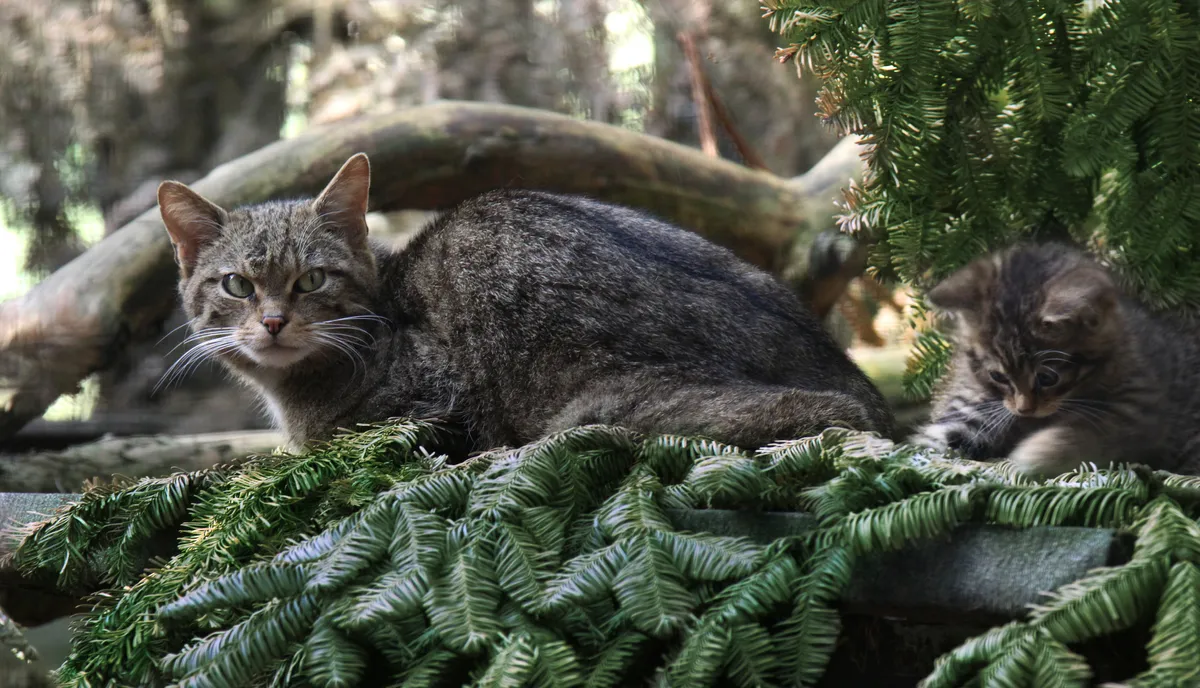
What do Scottish wildcats eat?
Their main prey are rabbits, hares and small mammals however their diet is related to prey availability. They will also eat amphibians, reptiles, insects and some grass and bracken, as well as fairly large birds and animals freshly killed on roads.
Where can I see Scottish wildcats?
Wildcats are very elusive and very rare which makes seeing them difficult. They are best spotted between dusk and dawn around woodland clearings or grassland edges bordering scrub or forest. In summer they can be seen in open moorland.
Scottish wildcats are kept in captivity in a number of locations.
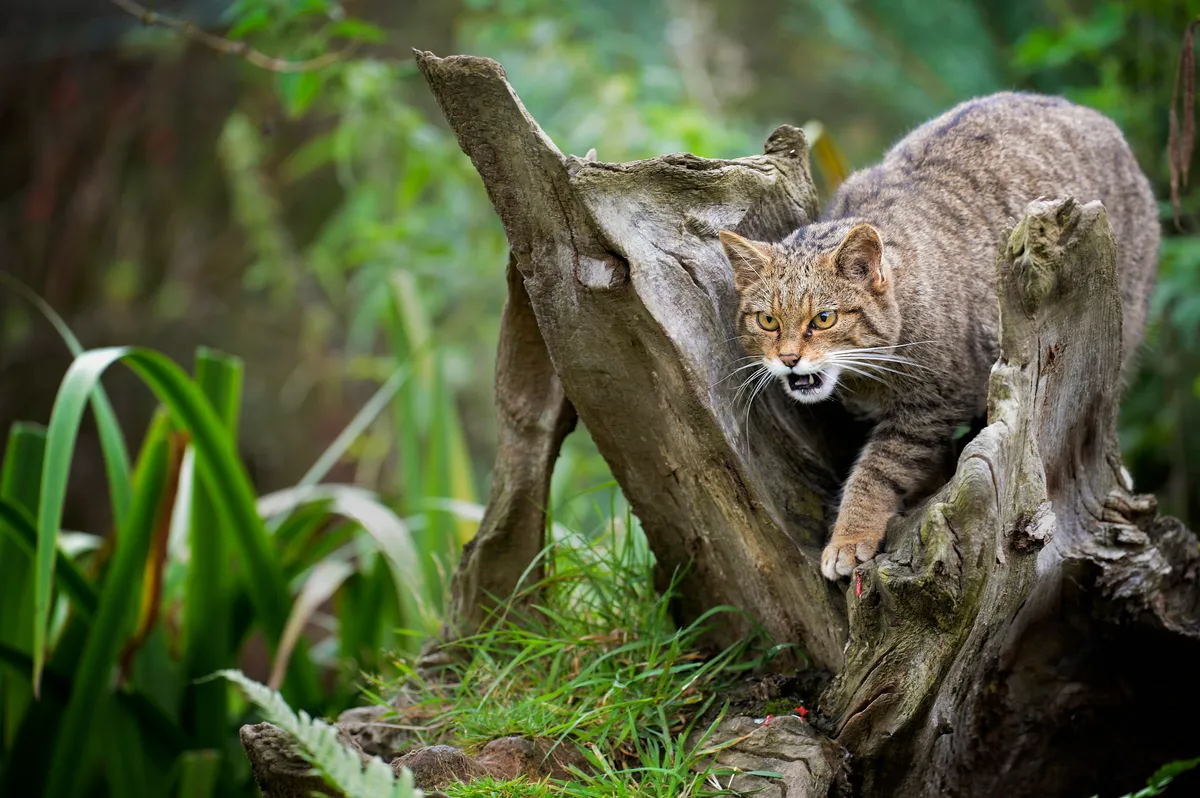
It is important to gather as much information on the wildcat population as possible, you can help the Mammal Society by recording your sightings and photographs of wildcats and hybrids using the Mammal Mapper App.
What work is being done to help Scottish wildcats?
The Wildlife and Countryside Act (1988) gives strict legal protection to wildcats and their dens. Although increasing afforestation (creating forests) helps wildcats to spread, mature conifer plantations become less suitable for the small mammals wildcats eat.
Therefore, in order to encourage wildcats, forestry management should aim to diversify the age of coupes within a forest and plant more broadleaf species.
Efforts to conserve wildcats in Scotland are now focused on captive breeding with the intention of releasing wildcats back in to the wild.
Established in 1954, the Mammal Society is a charity that promotes science-led mammal conservation to preserve these charismatic species for future generations. As the only society focused on all of Britain's mammals, it works to identify effective conservation strategies and to provide scientific evidence to determine policy and practice.
Main image: Scottish wildcat kitten in captivity. © Linda More/Getty
